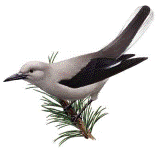Papers in the Biological Sciences
Document Type
Article
Date of this Version
12-2006
Abstract
Food-storing birds use spatial memory to find previously cached food items. Throughout winter, pinyon jays (Gymnorhinus cyanocephalus) rely heavily on cached pinyon pine (Pinus edulis) seeds. Because of a recent severe drought, pinyon pine trees had not produced a significant seed crop for several years. Therefore, 1- and 2-year-old birds never had the opportunity to cache and recover seeds and birds 4 or more years of age had not recovered seeds in 3 years. This study examined whether natural but extreme variability in experience might result in differences in abstract spatial memory ability during a non-cache recovery test of spatial memory. Three groups of jays were tested for spatial memory ability in an open room analog of the radial arm maze. Two of the groups were 8 months old: young/minimally experienced birds which had 2 months of experience in the wild, while young/experienced birds had 5 months of experience in their natural habitat. The third group, adult, consisted of birds more than 3 yr old, with at least 3 yr of experience in their natural habitat. This was the only group with experience caching pine seeds. All three groups performed equally and well above chance. This suggests that spatial memory is fully developed by 8 months of age and is not affected by extensive experience in the wild.



Comments
Published in Ethology 112:12 (2006), pp. 1202-1208; doi: 10.1111/j.1439-0310.2006.01279.x Copyright © 2006 B. Lucas Stafford, Russell P. Balda, and Alan C. Kamil; published by Blackwell Verlag, Berlin. Used by permission.